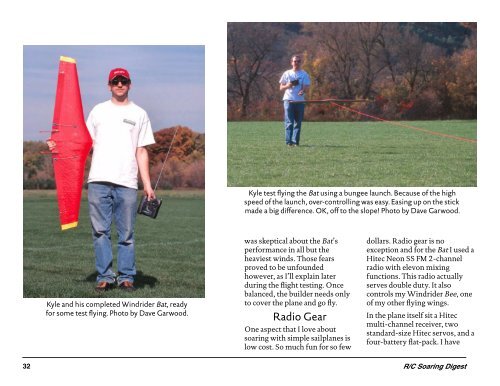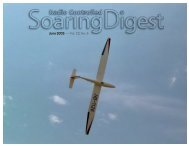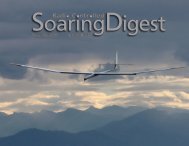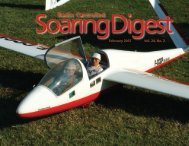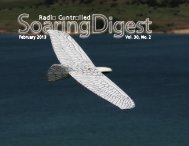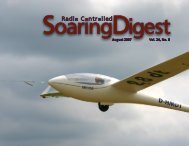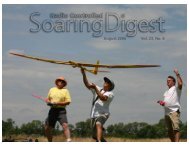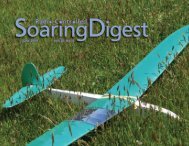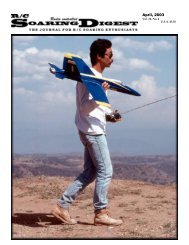December 2005 — Vol. 22, No. 12 - RC Soaring - RCSoaring.com
December 2005 — Vol. 22, No. 12 - RC Soaring - RCSoaring.com
December 2005 — Vol. 22, No. 12 - RC Soaring - RCSoaring.com
Create successful ePaper yourself
Turn your PDF publications into a flip-book with our unique Google optimized e-Paper software.
Kyle test flying the Bat using a bungee launch. Because of the high<br />
speed of the launch, over-controlling was easy. Easing up on the stick<br />
made a big difference. OK, off to the slope! Photo by Dave Garwood.<br />
Kyle and his <strong>com</strong>pleted Windrider Bat, ready<br />
for some test flying. Photo by Dave Garwood.<br />
was skeptical about the Bat’s<br />
performance in all but the<br />
heaviest winds. Those fears<br />
proved to be unfounded<br />
however, as I’ll explain later<br />
during the flight testing. Once<br />
balanced, the builder needs only<br />
to cover the plane and go fly.<br />
Radio Gear<br />
One aspect that I love about<br />
soaring with simple sailplanes is<br />
low cost. So much fun for so few<br />
dollars. Radio gear is no<br />
exception and for the Bat I used a<br />
Hitec Neon SS FM 2-channel<br />
radio with elevon mixing<br />
functions. This radio actually<br />
serves double duty. It also<br />
controls my Windrider Bee, one<br />
of my other flying wings.<br />
In the plane itself sit a Hitec<br />
multi-channel receiver, two<br />
standard-size Hitec servos, and a<br />
four-battery flat-pack. I have<br />
32 R/C <strong>Soaring</strong> Digest


